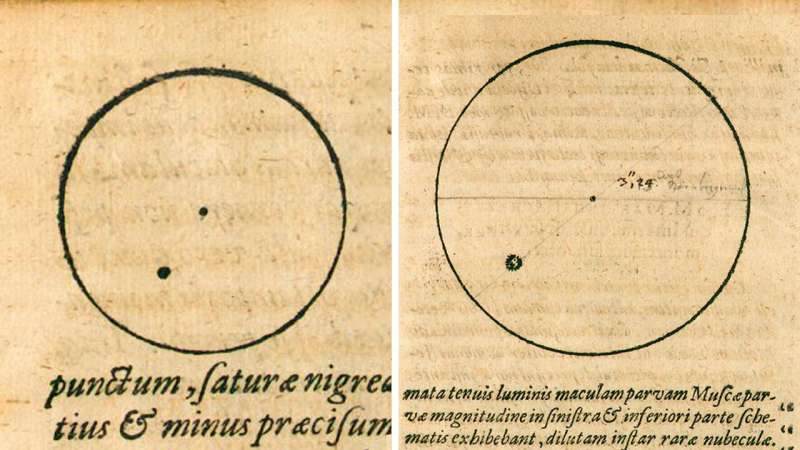Scientists have analyzed sketches of sunspots made in 1607 by the eminent astronomer Johannes Kepler. They made it possible to estimate the duration of solar cycles on the eve of the so-called Maunder minimum, and the result was quite interesting.

Kepler’s records
Scientists at Nagoya University in Japan have analyzed the sketches of the eminent astronomer Johannes Kepler using modern techniques. In 1607, he created several diagrams of spots he observed on the surface of the Sun. Now scientists have been able to estimate to which period of the solar cycle these spots belong.
As we know, the number of sunspots and flares on the Sun fluctuates with periodicity. On average, it is 11 years, but in reality the duration of a particular cycle may differ by years. And in general, its parameters can vary greatly.
Solar cycles are called by numbers. The one that is now ending is the 25th. However, this doesn’t mean that there were no solar flares and sunspots before 1. The periods of its activity are numbered in the minus direction. In particular, those on which Kepler’s observations fall have numbers -13 and -14.
Maunder Minimum
The most important event in solar astronomy of the seventeenth century was the so-called Maunder Minimum. It lasted from 1645 to 1715. The peaks of solar cycles were very low all this time, and there were few sunspots. Why this happened, scientists don’t know.
However, as the study of old tree trunks shows, this may have been preceded by two cycles of abnormal length. Initially there was a long one of 16 years and then a short one of only 5 years.
However, another similar study says that solar cycles -13 and -14 did have normal durations. The records of Johannes Kepler and other astronomers who were observing the Sun at the time could explain these questions.
What the research showed
Kepler left behind several sketches showing the change of sunspots on the Sun in 1607. However, there are no precise indications of sunspots on the disk of the Sun. So the scientists made some assumptions about this and applied the so-called Spörer’s law to the analysis. It shows how these spots should migrate through the cycle.
The first thing they found out is that Kepler’s records don’t completely match his drawings. Second, we see the spots in the illustrations at the end of the -14 cycle, not at the beginning of the -13 cycle. The main conclusion from this is that the change in cycles occurred somewhere between 1607 and 1610.
So both of these cycles were of normal duration, which means that the credible one is not the mainstream, but an alternative view of how Maunder Minimum began. Scientists will continue to explore Kepler’s legacy in search of exciting new evidence.
According to phys.org


